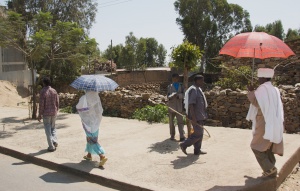Non-Communicable Diseases
Non-Communicable Diseases (NCDs) are conditions that are not transferred from person to person (non-contagious) and occur as result of combined behavioural, physiological, environmental and genetic factors[1].
There are four main types of NCDs :-
There are four main modifiable risk factors that affect an individual’s susceptibility to NCDs:-
Global Incidence of NCDs
All children, adults and elders are vulnerable to these four major risk factors. Globally, NCDs are involved in the deaths of 40 million people each year which accounts for 71% of all deaths. Among these, 17 million people die from NCDs before 70 years of age (pre-mature death). The majority of these deaths (over three quarters) occur in low-and middle-income countries[2].
NCDs and Physical Inactivity
Physical inactivity is the term used for not achieving the recommended levels of physical activity for health. It is one of the major risk factors for non-communicable diseases (NCDs) which ranked as the fourth leading cause of death in the world with about 9% of all deaths recorded in the world being attributed to physical inactivity[3].
It is now described as a pandemic that needs urgent action[4]. Inactive people are 20-30% times more likely at risk of death compared to active individuals. Evidence showed that 1 in 4 adults in the world are inactive. Globally, more than than 80% of the adolescent population is physically inactive[5]. Currently, there are global efforts to decrease the prevalence of physical inactivity by 10% at the end of 2025[5].
Physical Activity Interventions
It is important to plan physical inactivity interventions with the aim of preventing and managing NCDs[4]. No single intervention is effective to increase physical activity level; instead a comprehensive collaborative approach is most effective. Interventions should be easy, simple, cheap, social and sustainable across the life span.
The World Health Organisation presented example physical inactivity interventions in a global action plan for prevention and control of NCDs[6] :
- Implementing public awareness and motivational communications including mass media for physical activity behavioural change.
- Establishing physical activity counselling and referral services at primary health care services.
- Implementing multi-component workplace friendly physical activity programs.
- Implementing community-wide friendly physical activity programs involving multiple settings and sectors
- Implementing whole-of-school program that support physical activity for all children.
- Implementing public transport systems that prioritise walking and cycling.
- Providing convenient and safe urban design and infrastructure to support side walking and cycling.
- Promoting physical activity through organised sport programs and events[7][8].
References
- ↑ WHO. Non-Communicable Diseases fact sheet. World Health Organization, Geneva, Switzerland. 2017; [/www.who.int/mediacentre/factsheets/fs355/en/ ↑ NCD mortality and morbidity, Global Health Observatory (GHO) data, WHO [↑ Lee IM, Shiroma EJ, Lobelo F, Puska P, Blair SN, Katzmarzyk PT. Effect of physical inactivity on major non-communicable diseases worldwide: an analysis of burden of disease and life expectancy. Lancet. 2012; 219:219–229.
- ↑ 4.04.1 Kohl HW, Criag CL, Lambert EV, Inoue S, Alkandari JR, Leetongin G, Kahlmeier S. The pandemic of physical inactivity: global action for public health. Lancet physical activity series working group: The Lancet UK. 2012; 380:294–305.
- ↑ 5.05.1 WHO. Physical activity fact sheet. World Health Organization, Geneva, Switzerland.
- ↑ WHO. Global action plan for the prevention and control of NCDs 2013-2020: Updated appendix 3 of physical activity technical annex. World Health Organization Press. Geneva, Switzerland, 2017
- ↑ ISPAH. Global Advocacy for Physical Activity (GAPA) the Advocacy Council of the International Society for Physical Activity and Health (ISPAH). The Toronto Charter for Physical Activity: A Global Call to Action. May 20, 2010. Available from [/www.globalpa.org.uk/charter/ ↑ ISPAH. Global Advocacy for Physical Activity (GAPA) the Advocacy Council of the International Society for Physical Activity and Health (ISPAH). NCD Prevention: Investments that Work for Physical Activity. February 2011. Available from [/www.globalpa.org.uk/investmentsthatwork www.globalpa.org.uk/investmentsthatwork]


